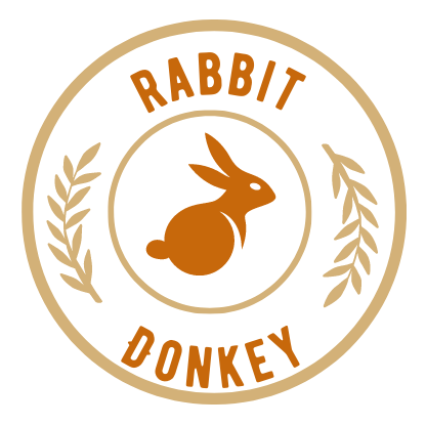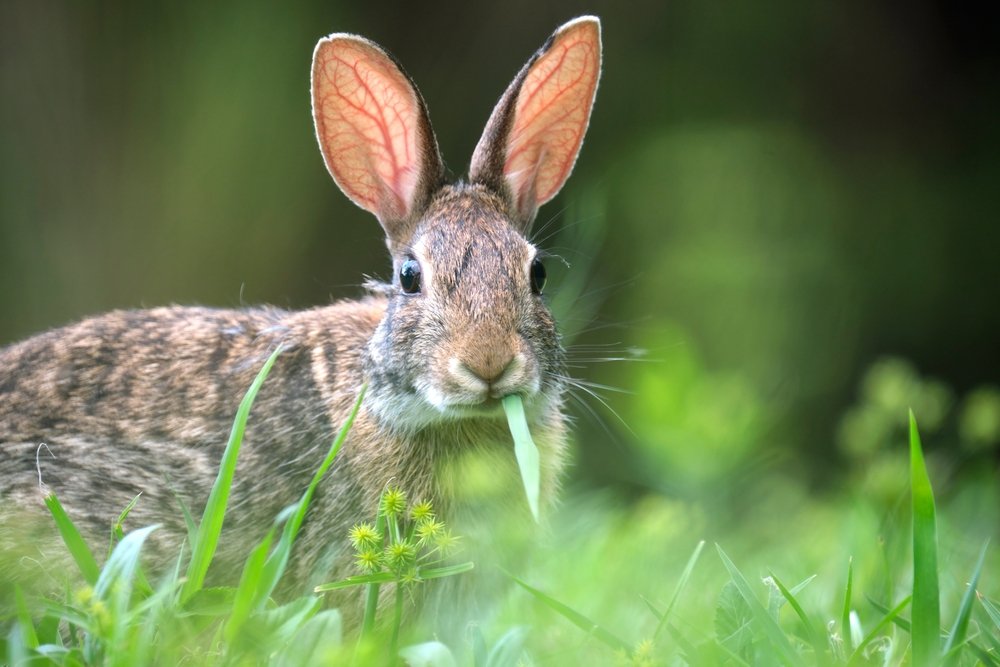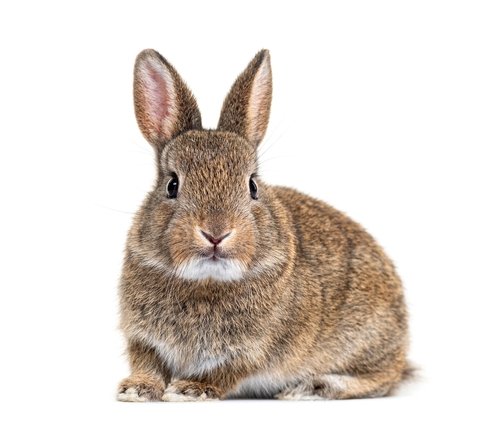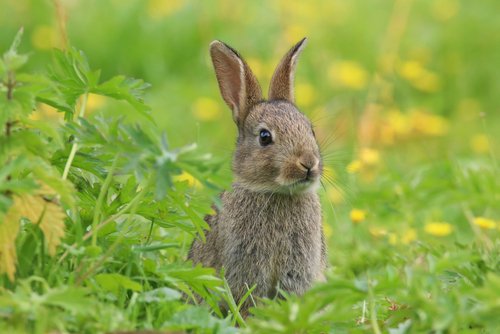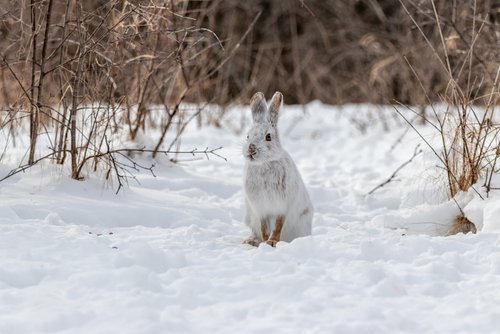Rabbit Care: What You Need to Know Now!
Rabbits, those charming, furry creatures known for their adorable floppy ears and fluffy tails, belong to the order Lagomorpha. They are small to medium-sized herbivorous mammals that are widely distributed across the globe. In this blog, we will discuss rabbit care.
The scientific name for rabbits is Oryctolagus cuniculus, but they encompass a variety of species within this genus. Rabbits have captivated the imagination for centuries with their distinctively rounded bodies and long hind legs built for astonishing agility and speed.
Importance of Rabbits in Various Cultures and Folklore
Since ancient times, rabbits have held significant cultural importance in many societies worldwide. These docile creatures have been featured prominently in folklore, mythology, and literature across various cultures.
From Eastern traditions, where rabbits symbolize good fortune and prosperity, to Western folklore, which often represents cunning or fertility, these animals have taken on numerous symbolic roles throughout history. In some ancient civilizations, such as ancient Egypt, rabbits were considered sacred animals associated with the moon goddess due to their nocturnal nature and ability to reproduce rapidly.
Furthermore, rabbits have appeared in popular culture through characters like the iconic white rabbit from Lewis Carroll’s “Alice’s Adventures in Wonderland,” adding an air of whimsy and intrigue. The beauty and innocence rabbits portray have also made them a beloved subject for artists throughout history.
Countless art pieces showcase these gentle creatures in various forms – be it realistic portrayals capturing their captivating gaze or imaginative interpretations intertwining them with magical elements. In today’s society, domestic rabbit companionship has become increasingly popular due to their charming appearance and gentle demeanor.
People are drawn to their delightful presence and the responsibility of providing proper rabbit care. Whether they exist as adorable pets or as symbols in cultural narratives dating back centuries, rabbits continue to capture the hearts and minds of people, reminding us of the delicate balance between nature and human connection.
Taxonomy and Classification
The Hierarchical Structure
The study of taxonomy is crucial for understanding the classification of organisms. In the case of rabbits, their classification can be traced through various hierarchical levels.
At the highest level, they belong to the animal kingdom (Animalia) as multicellular eukaryotic organisms. Moving down the hierarchy, they fall under the phylum Chordata due to possessing a notochord during embryonic development.
Furthermore, rabbits are classified in Mammalia as warm-blooded vertebrates that nurse their young with milk produced by mammary glands. Delving deeper, they are categorized within the order Lagomorpha alongside hares and pikas.
This order is characterized by unique dental adaptations for herbivory and hind limbs specialized for leaping. Within Lagomorpha, rabbits belong to the family Leporidae.
Exploring Genera and Species
Several genera exist within Leporidae; one genus is particularly prominent: Oryctolagus. This genus encompasses a well-known species called Oryctolagus cuniculus or European rabbit—an ancestral species from which most domestic rabbits originate. Aside from Oryctolagus cuniculus, other notable genera, such as Sylvilagus (cottontail rabbits), found extensively in North and South America, and Nesolagus (Sumatran striped rabbit) endemic to Southeast Asia.
Common Rabbit Species Found Worldwide
The world boasts an impressive array of rabbit species scattered across diverse habitats and continents. The European rabbit (Oryctolagus cuniculus) holds prominence in Europe and has been introduced to other regions worldwide due to its economic value for meat production and fur trade. In North America alone, numerous cottontail rabbits from the Sylvilagus genus exist, including the Eastern cottontail (Sylvilagus floridanus) and the New England cottontail (Sylvilagus transitionalis).
Moving to the American West, we find the black-tailed jackrabbit (Lepus californicus), recognized for its impressive speed and exceptionally long ears. Venturing down under, Australia is home to unique species such as the European rabbit (Oryctolagus cuniculus) and the Rufous bettong (Aepyprymnus rufescens), also known as the rufous rat-kangaroo.
Rabbits’ diverse taxonomy and worldwide distribution highlight their adaptability to various environments. Understanding their classification provides a foundation for comprehending their ecological roles and evolutionary relationships within the animal kingdom.
Physical Characteristics
Size and Weight Variations among Different Rabbit Breeds
Rabbits come in a remarkable variety of sizes and weights, ranging from the petite Netherland Dwarf breed weighing around 1-2 pounds (0.45-0.91 kg) to the larger Flemish Giant breed, which can reach an impressive weight of up to 14 pounds (6.35 kg). The diverse range in size results from selective breeding practices over centuries, catering to specific purposes such as meat production, fur trade, or exhibition in rabbit shows.
Fur Coloration and Patterns in Rabbits
One of the fascinating aspects of rabbits is their vast array of fur colors and patterns. Domestic rabbits exhibit an extensive palette with solid colors like white, black, brown, gray, or tan and various combinations.
When picturing a rabbit in our minds, certain features instantly come to focus – their long ears being one of the most recognizable traits. These elongated ears serve multiple purposes: enhancing hearing abilities by capturing even faint sounds while aiding thermoregulation by dissipating excess body heat.
Apart from their iconic ears, rabbits are known for their powerful hind legs, which enable them to achieve impressive speeds during bursts of locomotion known as “binkies.” Their strong hind limbs also allow them to execute agile jumps and leaps. Many rabbit breeds sport a fluffy, cotton-like tail that adds to their overall charm and serves as an adorable visual feature that distinguishes them from other mammalian counterparts.
Habitat and Distribution
Natural Habitats of Rabbits – From Forests to Grasslands and Deserts
Rabbits are incredibly adaptable creatures with the ability to thrive in a diverse range of environments. Their natural habitats span various landscapes, including forests, grasslands, deserts, and wetlands. Within these habitats, rabbits strategically select specific microhabitats that provide ample food sources and protection from predators.
In forested areas, such as deciduous or coniferous forests, rabbits may seek shelter in thick underbrush or burrow into the forest floor. Grasslands offer rabbits vast expanses for grazing on grasses and herbs while providing sufficient hiding places in tall vegetation.
In arid regions like deserts, rabbits have evolved remarkable water conservation abilities to survive in harsh conditions with limited water sources. By occupRabbitsrate their versatility as an adaptable species.
Global by occupying different ecological niches within these habitats Distribution of Rabbit Populations Across Continents
Due to its extreme climate conditions, rabbits can be found on almost every continent except Antarctica. They exhibit a wide distribution range from the Americas (North and South), Europe, Africa, Asia, and Australia. Each continent hosts several native rabbit species adapted to their regions through natural selection.
For instance, in North America alone, various species exist, such as the Eastern cottontail (Sylvilagus floridanus) and the Snowshoe hare (Lepus americanus). In Europe, common rabbit species include the European rabbit (Oryctolagus cuniculus), while Africa is home to unique species like the Riverine rabbit (Bunolagus monticularis).
Asia boasts diverse rabbit populations ranging from well-known species like the Amami rabbit (Pentalagus furnessi) in Japan to the critically endangered Ili pika (Ochotona iliensis) in China. Australia, often associated with marsupials, also has rabbits, but these introduced humans-introduced these pests due to their rapid reproduction and impact on native ecosystems.
The global distribution of rabbit populations showcases their ability to adapt and thrive in various ecological contexts across the continents. Incorporating rabbit pictures into articles about rabbits can enhance the visual appeal for readers.
However, since this is a text-based format without image support, readers are encouraged to explore online sources for visually captivating depictions of rabbits that can further enrich their understanding of these remarkable animals. Additionally, individuals seeking more information about rabbit care or considering adopting a domestic rabbit as a pet should consult specific resources dedicated to rabbit care and welfare to ensure they provide appropriate care suitable for these unique companions.

Diet and Feeding Habits
Herbivorous Nature of Rabbits – Importance of Fibrous Vegetation in Their Diet
Rabbits are renowned for their herbivorous nature, subsisting primarily on a diet consisting of fibrous vegetation. This dietary preference stems from the rabbit’s unique digestive system, specifically adapted to efficiently process plant material such as grasses, leaves, and hay, which form the cornerstone of a rabbit’s diet, providing essential nutrients and dietary fiber necessary for their well-being.
The high fiber content aids in maintaining proper gut motility and preventing gastrointestinal stasis—a potentially fatal condition common in domestic rabbits due to limited access to fresh greens. The herbivorous nature of rabbits can be traced back to their evolutionary adaptation as grazing animals.
Their ability to extract energy from cellulose-rich plant material sets them apart from other mammals that lack this capability. Through the process of fermentation in their specialized digestive system, rabbits break down complex carbohydrates and extract essential nutrients from fibrous vegetation effectively.
Unique Digestive System Adaptations for Processing Plant Material Efficiently
Rabbits possess a remarkable digestive system that processes plant material efficiently. At the core of this adaptation lies a specialized structure called the cecum. It serves as a fermentation chamber where bacteria break down cellulose into simpler compounds that digest rabbits and consume fibrous vegetation; they first undergo mechanical digestion through mastication using their strong incisors. The food then moves through the esophagus into the stomach but quickly bypasses the initial stages of digestion before progressing into the small intestine.
The fascinating aspect of a rabbit’s digestion occurs within its cecum, where beneficial bacteria ferment undigested plant material. This fermentation process allows for the breaking down of cellulose into volatile fatty acids, providing an additional source of nutrients and energy.
After fermentation, the material is expelled as soft fecal pellets known as cecotropes, which rabbits readily consume to obtain vital nutrients like protein, vitamins, and minerals that were synthesized during fermentation. Rabbits’ herbivorous nature and unique digestive system adaptations highlight their exceptional capacity to extract nutrients from fibrous vegetation.
This dietary preference and the efficient processing of plant material play a crucial role in maintaining a rabbit’s overall well-being. It is vital for rabbit owners to understand these dietary requirements to ensure proper nutrition and optimal health for their domestic rabbits.
Reproduction and Life Cycle
Mating behaviors – courtship rituals and territoriality
Rabbits exhibit fascinating mating behaviors characterized by intricate courtship rituals and territorial displays. When a male rabbit, known as a buck, is ready to mate, he will engage in various behaviors to attract a female or doe. This includes chasing the doe, hopping around her in circles, and even performing impressive leaps known as “binkies.” These displays demonstrate the buck’s physical prowess, marking his territory and asserting dominance over other males.
Gestation period and birth process
Once a successful pairing occurs, the doe undergoes a relatively short gestation period of about 28 to 31 days. During this time, she prepares an underground burrow called a “nest” using grasses and fur plucked from her own body.
When she is ready to give birth, known as kindling, the nest provides warmth and protection for the newborn kits. A typical litter can range from four to twelve kits depending on the specific breed.
Growth stages from newborn kits to sexually mature adults
Newborn kits are born hairless with closed eyes and are entirely dependent on their mother for survival. They receive nourishment through their mother’s milk until they gradually begin nibbling on solid food at around three weeks old.
As they grow older, their fur develops fully, and they can explore outside the nest. At approximately eight weeks of age, young rabbits are weaned off their mother’s milk completely and become sexually mature by around four to six months old.
Behavioral Patterns
Social behavior within rabbit colonies or warrens
Rabbits are highly social animals that naturally form colonies or groups known as warrens. Within these warrens, individuals establish hierarchies and maintain complex social structures. They engage in various social interactions, such as grooming each other to strengthen bonds, playing together, and even engaging in playful fights known as “boxing.” Social behavior provides a sense of security and companionship for rabbits.
Communication methods including vocalizations, body language, scent marking
Rabbits employ a range of communication methods to express their needs and emotions. While they are generally quiet animals, they do produce several vocalizations like soft purring when content or loud grunts when expressing displeasure.
Their body language is also crucial for communication – thumping hind legs to signal danger or excitement, wagging their tails when happy or curious, and flattening their bodies against the ground when feeling threatened. Additionally, rabbits use scent marking through glands located on their chins or under their tails to establish territorial boundaries.
Defense mechanisms against predators
To protect themselves from potential predators such as foxes or birds of prey, rabbits have evolved several defense mechanisms. Their strong hind legs enable them to sprint at high speeds and execute sudden directional changes known as “zigzagging,” making it challenging for predators to catch them.
Additionally, they possess acute senses of hearing and smell that allow them to detect threats early on. When confronted with danger, rabbits will often freeze in place or dive into dense vegetation for cover.
Domestication and Breeding
History of domestication for various purposes (meat production, fur trade)
Rabbits have been domesticated since ancient times primarily for two main purposes: meat production and the fur trade. The Romans were among the first civilizations to breed rabbits specifically for meat consumption due to their rapid reproductive rate and lean meat characteristics. Later on, during the Middle Ages in Europe, rabbit fur became highly sought after for its softness and warmth, leading to the establishment of specialized rabbitries dedicated to fur production.
Popular domestic rabbit breeds for pets or show purposes
As time passed, rabbits also became popular as beloved pets and show animals due to their gentle nature and adorable appearance. Various breeds have been selectively bred for different characteristics, including size, fur type, and color patterns.
Some popular domestic rabbit breeds include the Dutch, Mini Lop, Lionhead, Netherland Dwarf, and Flemish Giant. Each breed has its unique traits that make them suitable companions or contenders in rabbit shows.
Rabbit Health
Common diseases affecting rabbits (e.g., myxomatosis)
Rabbits are susceptible to various diseases that can impact their health and well-being. One notable disease is myxomatosis, which is caused by a viral infection transmitted by fleas or mosquitoes.
This disease affects wild rabbits more commonly but can also affect domesticated ones. Other common health issues in rabbits include dental problems, gastrointestinal disorders like bloating or diarrhea, respiratory infections, and parasitic infestations.
Proper care guidelines to ensure optimal health (dietary requirements, vaccinations)
Proper care guidelines must be followed to ensure optimal health for pet rabbits or those kept in breeding programs or shows; a balanced diet rich in hay for fiber content, perishables, and a controlled amount of pellets ensures their nutritional needs are met. Regular veterinary check-ups are essential to monitor overall health and administer necessary vaccinations against diseases such as viral hemorrhagic disease (VHD) and myxomatosis.
Conclusion
The rabbits’ world is filled with wonder as we delve into their reproduction methods and life cycle while exploring their intriguing behavioral patterns within colonies or warrens. Their unique mating behaviors, including courtship rituals and territoriality, showcase the complexity of their social interactions. As they progress through various growth stages, from helpless newborn kits to sexually mature adults, rabbits display resilience and adaptability.
Furthermore, their communication methods involving vocalizations, body language, and scent marking allow them to express themselves effectively within their social groups. In the context of domestication and breeding, rabbits have played pivotal roles in history for both meat production and fur trade purposes.
Today, they continue to captivate individuals as cherished pets or participants in rabbit shows. However, it is crucial to prioritize rabbit health by understanding common diseases affecting them and adhering to proper care guidelines encompassing dietary requirements and vaccinations.
By appreciating the beauty and intricacies of these remarkable creatures, we can forge a deeper connection with our furry companions while ensuring their overall well-being. (Note: Rabbit pictures are not included as per the given instructions.)
